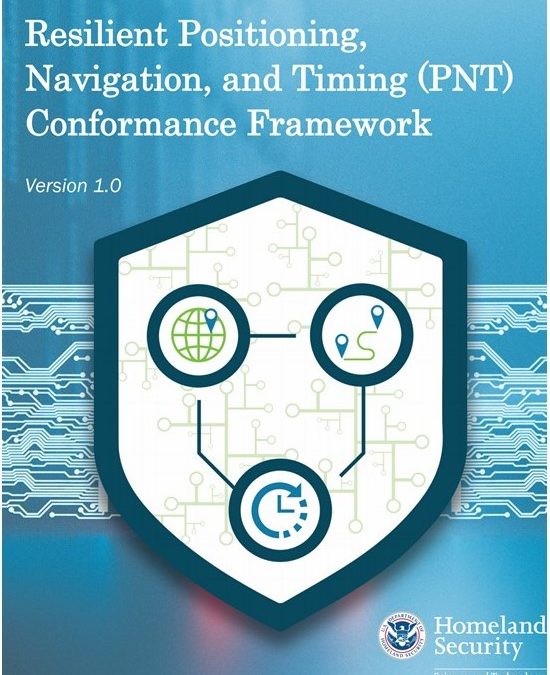Blog Editor’s Note: The community and government have long struggled to define “resilience” when it comes to GPS/GNSS receivers. While it does not provide the “procurement language” so many have called for, this is a huge step forward for the community. We will likely publish more on this in the coming weeks, but we wanted to ensure it was highlighted for our readers.

Resilient PNT Conformance Framework
Positioning, Navigation, and Timing (PNT) services have become an invisible but essential utility for many critical infrastructure operations. Disruption of or interference with these systems have adverse effects on individuals, businesses, and the nation’s economic and national security. The existence and nature of threats to PNT services are well known and both government and industry have recognized the need for resilient PNT equipment that is capable of withstanding and recovering from such threats.
The Resilient PNT Conformance Framework was sponsored by the U.S. Department of Homeland Security (DHS) Science and Technology (S&T) Directorate and developed in coordination with industry and federal agency partners. It provides guidance for defining expected behaviors in resilient PNT equipment, with the goal of facilitating development and adoption of those behaviors through a common framework that enables improved risk management, determination of appropriate mitigations, and decision making by end-users.
This framework focuses on resilience and is relevant to both equipment vendors and critical infrastructure end-users. It applies to equipment that outputs PNT solutions, including PNT systems of systems, integrated PNT receivers, and PNT source components (such as GNSS chipsets). The framework is outcome-based and contains four levels of resilience so that end-users can select a level that is appropriate for their needs.



